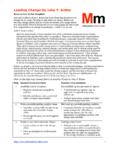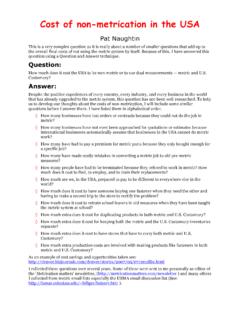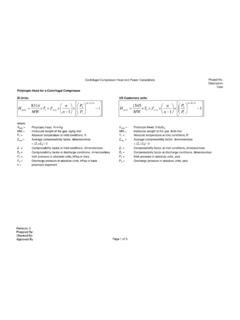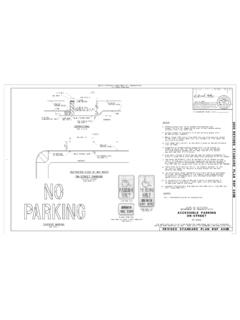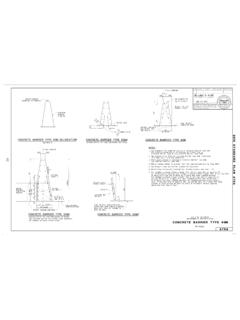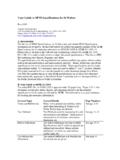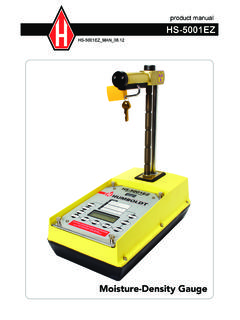Transcription of What is metrication?
1 what is metrication ? Pat Naughtin metrication is the process of upgrading from any of the many and various old pre-metric measurement methods to the modern metric system, which is technically known as The International System of Units (SI). metrication began in France in the 1790s and then spread rapidly to all other nations in the world. Gradually, through the 1800s, the metric system replaced all of the numerous old historical weighing and measuring methods. By 1900, almost all nations had passed laws that accepted the metric system for use in trade, and during the late 1800s this usually translated into widespread use of the metric system by the public.
2 The metric system is now used by all of the world's people in all nations. The philosopher, Condorcet, proved to be correct when, in 1791, he described the original metric system as: For all people; for all time. As examples, the USA has allowed metric measuring units since 1866, and the UK since 1873. Liberia and Myanmar are the only nations that have not yet passed specific metric laws but the metric system is used in both of those countries every day. Only in France, Japan, the United Kingdom, and the United States of America has there been any significant opposition to metrication , the main objections being based on history, tradition, aesthetics, economic conjecture, and a personal distaste for foreign ideas.
3 In France and Japan the opposition faded as soon as people regularly used the metric system. This left only two nations, the UK and the USA, with citizens who have difficulty accepting the reality of worldwide metrication . For example, while the world automotive industry 'went metric' in the 1970s, the anti-metric lobbyists in the UK and the USA still insist, in the 21st century, that the all-metric cars, whether made in the UK and the USA or imported, have mph written on their speedometer, ml written on their odometers; and psi written on their tyres. While the anti-metric people protest, the rest of us simply: get with it; get over it; and get on with it!
4 Opposition to the metric system sometimes leads to quite odd results. In the USA, since the Mendenhall Order in 1893, all old measures such as yards and pounds have been legally and officially defined by the USA in terms of the metric system. The USA yard was defined as: 1 yard = 3600/3937 metre, or 1 inch = 050 8 millimetres. In the same year, 1893, the Congress of the USA defeated a measure to adopt the metric system. As suggested by Mark Twain (Samuel Langhorne Clemens 1835/1910): Denial ain't just a river in Egypt. metrication process The common processes that governments use in upgrading from traditional measurement methods to the metric system are: Direct metrication Phased metrication Metric conversion Direct metrication Direct metrication is rapid, smooth, and economical.
5 Direct metrication was used by India in the early 1960s. The Indian approach was to simultaneously outlaw the use of all old pre-metric measurements, to rewrite and to reissue all government publications and laws, and to change education curricula to metric. India's metrication upgrade lasted from 1960 April 1, when metric became legal, to 1962 April 1, when all the old pre-metric measures systems were banned for use in trade. The Indian model was extremely successful and it was successfully copied by several other nations. Direct metrication was used by the Australian construction industry to 'go metric' in a single year, and direct metrication was used by the world automotive industry to 'go metric' in the 1970s.
6 Phased metrication Phased metrication is slow, painful, and expensive. Phased metrication involves passing laws that permit the use of metric units in parallel with old measures. This is then followed, on a parliamentary and political timescale, by slowly banning all of the old pre-metric measures. I will use 3 phased metric examples in the order that they 'went metric': the USA, the UK, and Japan. USA The USA has been using a phased metrication policy since President Andrew Johnson signed the Kassen Act (1866 July 28). This Act declared it lawful throughout the USA to 'employ the weights and measures of the metric system'.
7 The USA is still going through its process of phased metrication in 2006 140 years later and still counting. UK The United Kingdom permitted the use of the metric system in 1873, but little progress was made until pro-metric laws were passed whenever UK politicians saw a chance to do so (the major Weights and Measures Acts in the UK were in 1963, 1976, and 1985). However, despite huge efforts, anti-metric lobbyists in the UK were only able to gain exceptions in four areas: miles, yards, feet and inches for road signs; pints for beer and cider; acres for farmland; and troy ounces for gold and silver.
8 All other measurements in the UK are now fully metric. Japan Japan chose phased metrication and their changeover was painfully slow, with bitter political and personal disputes, and expensive. Japan ratified the Convention du M tre in 1886, and began their phased approach in 1891 but little happened. The government then decided, in 1909, to adopt the units of the British inch-pound system. Japan then had three legally approved measuring methods: traditional units based on the 'shaku' and the 'kan', metric units, and the British inch-ounce measures. In 1924, the Japanese government decided to adopt the metric system within ten years, but their law also allowed the continued use of other methods as transitional measures.
9 The metrication process was so slow (probably due to dithering between the three measurement methods) that it created considerable public opposition to the metric system. Japanese metrication experienced a further setback when the country was occupied, in the late 1940s, by military forces from the USA. Japan then experienced a de facto measuring conversion to the customary units of the USA the Japanese then had four different methods of measurement. The cultural power of the USA is still felt around the world as a result of the measuring language used in film, television, radio, and sports commentaries.
10 When reporters imported from the USA to comment on (say) tennis players from that country, they choose to use feet, inches, and miles per hour because that is all they know. These commentators seem quite unaware that more than 96 % of the world population prefer to use metric measuring units. Japanese phased metrication is still continuing into the 21st century with sake bottles and tatami mats as examples of hold-outs. Metric conversion Metric conversion is so slow that it may never succeed; so bitter that it divides families, industries, institutions, and nations; and so expensive that most nations probably cannot afford it.



